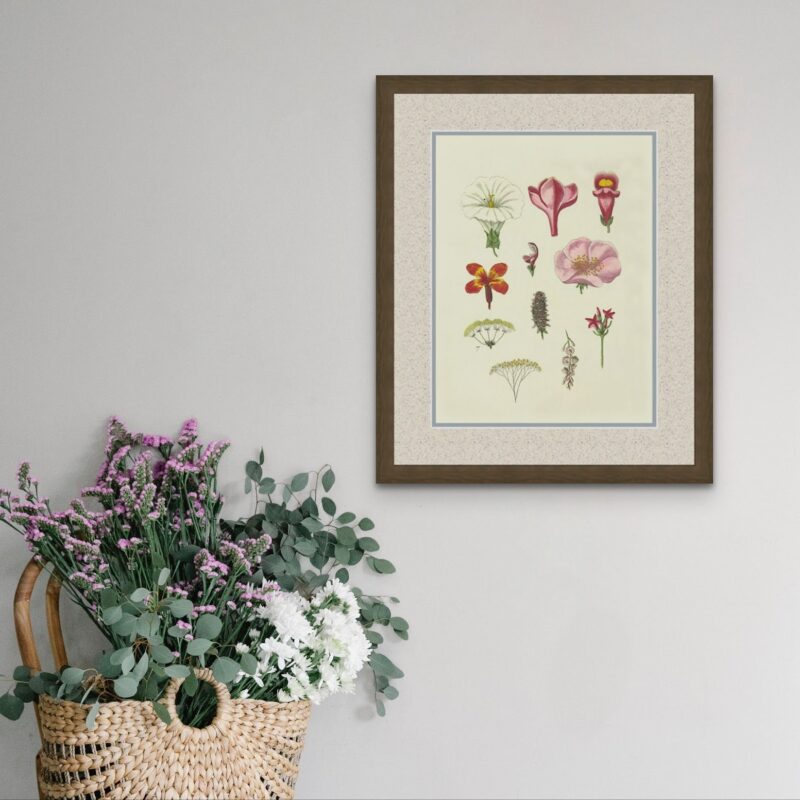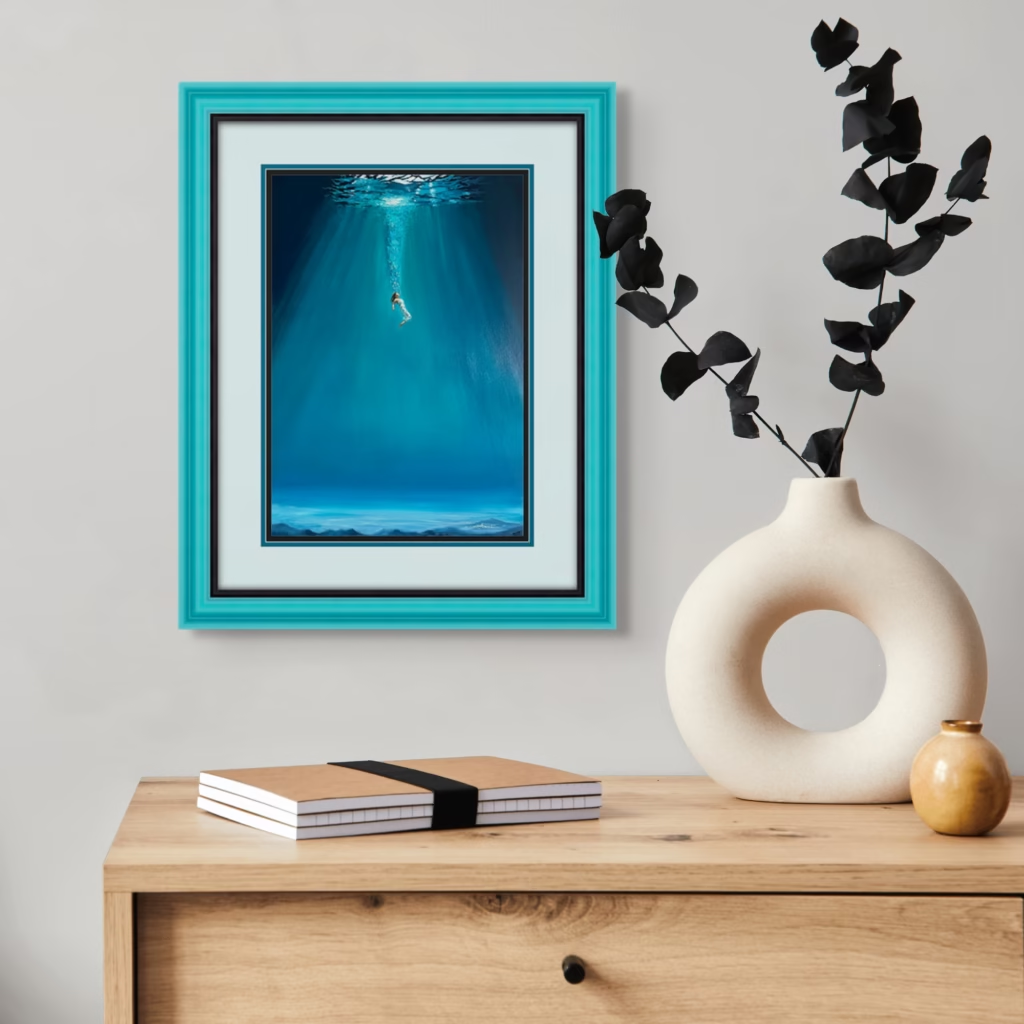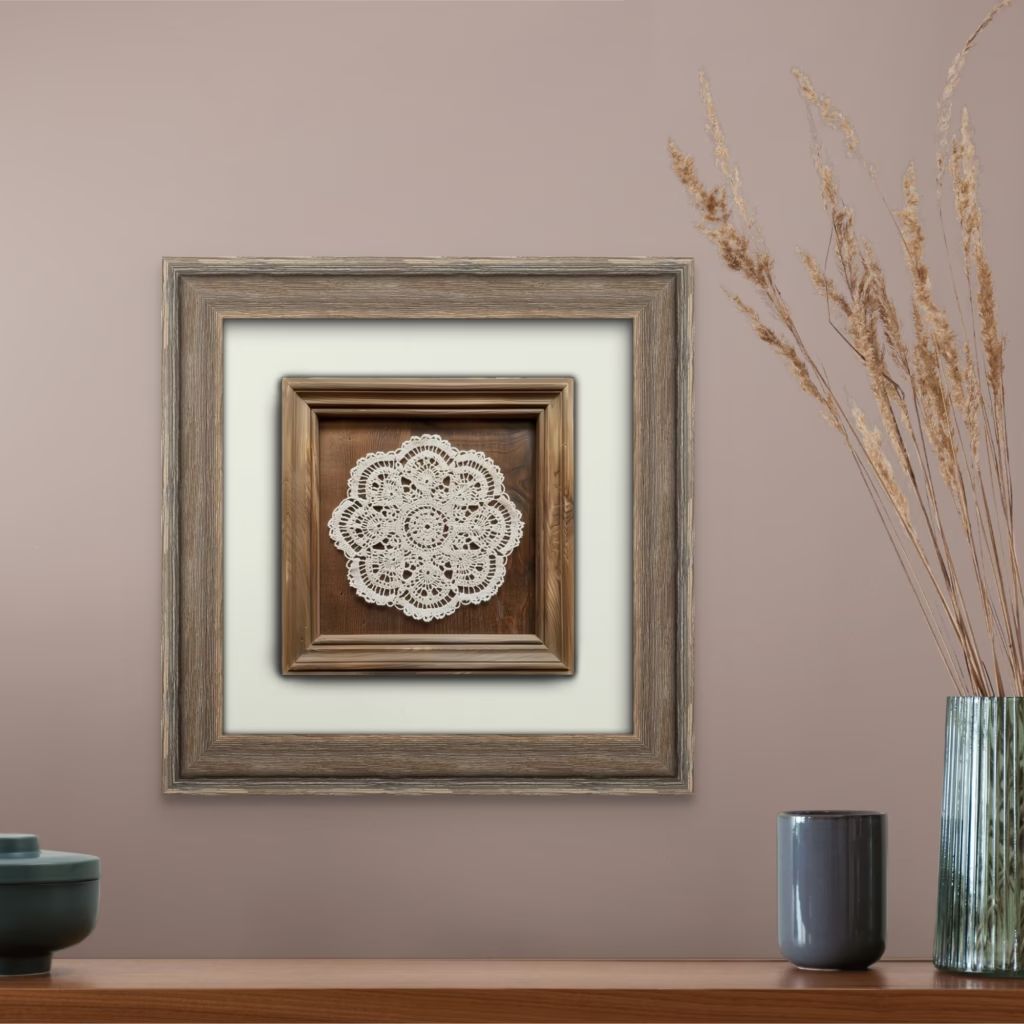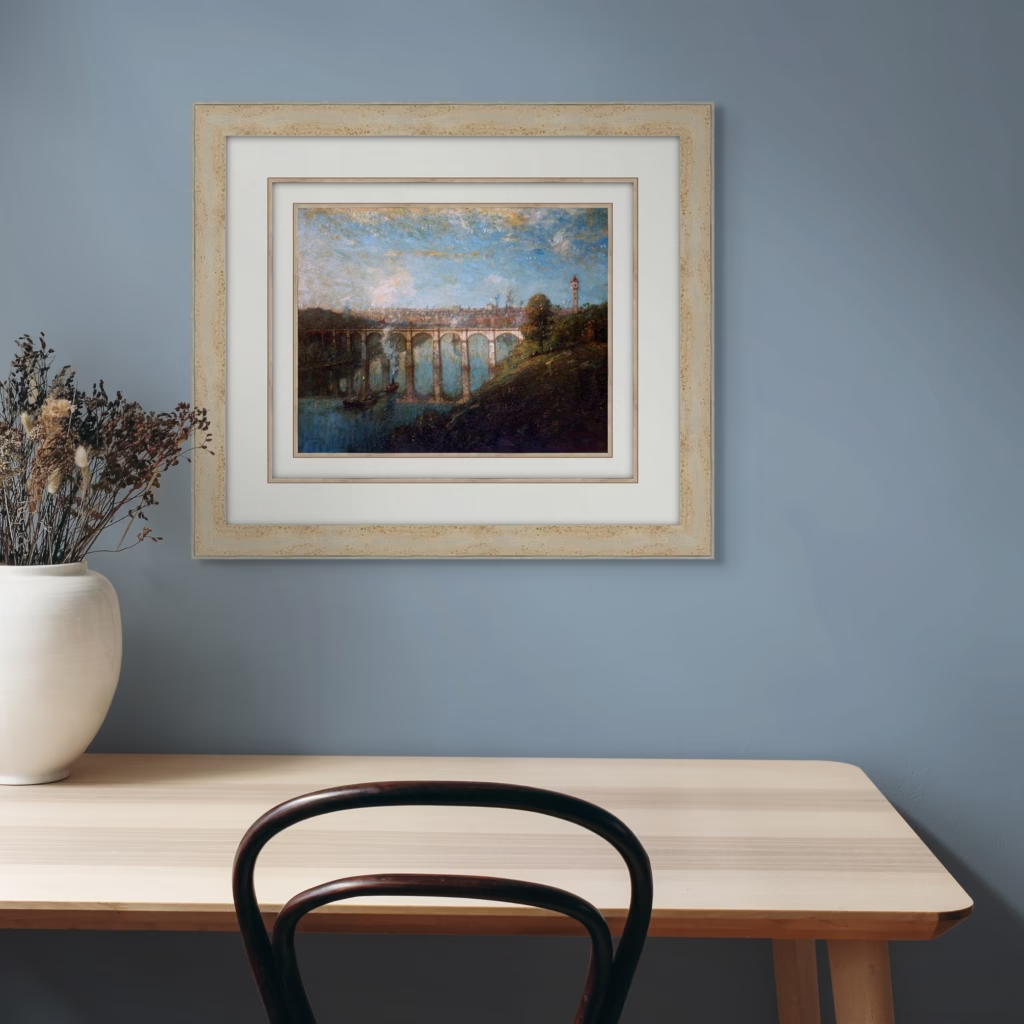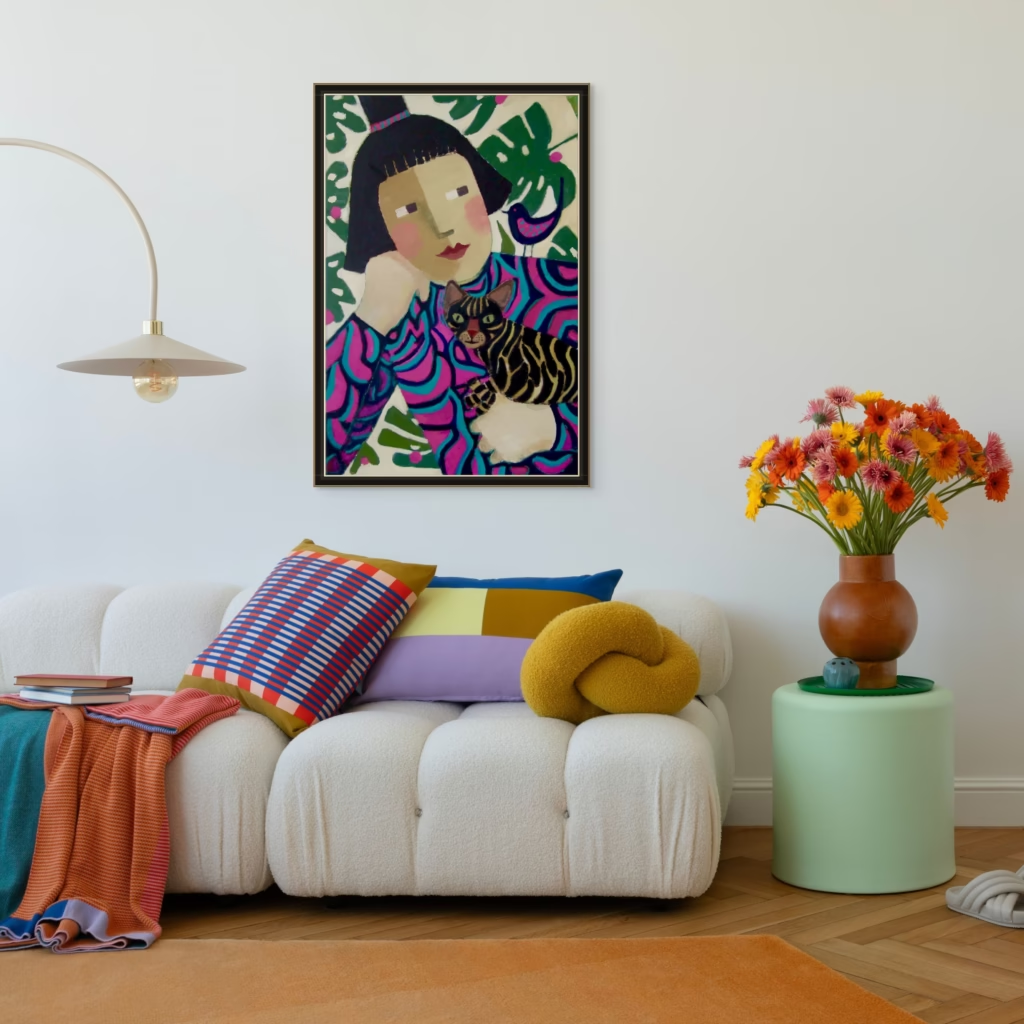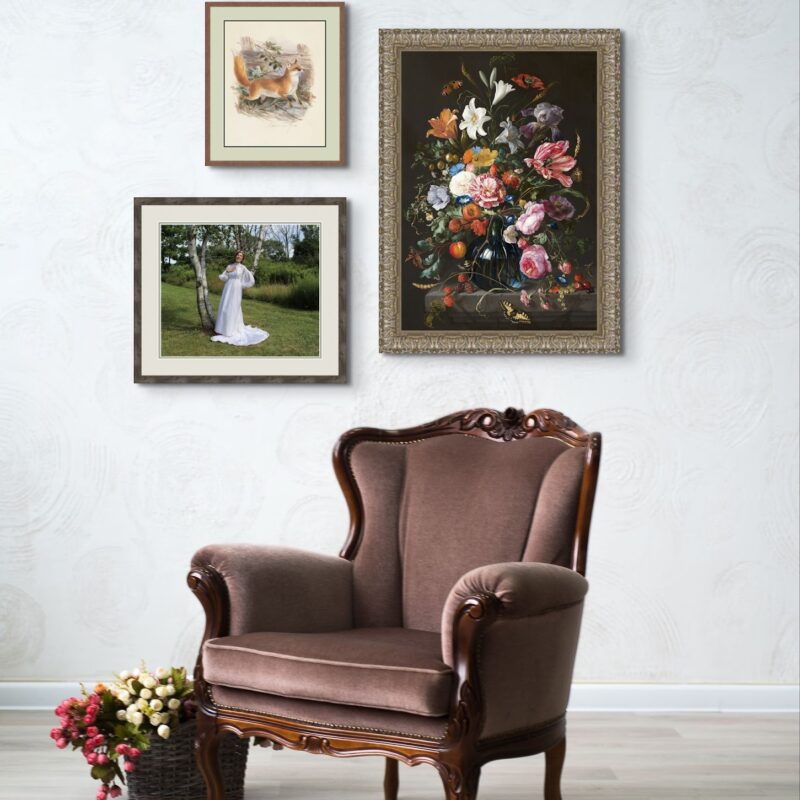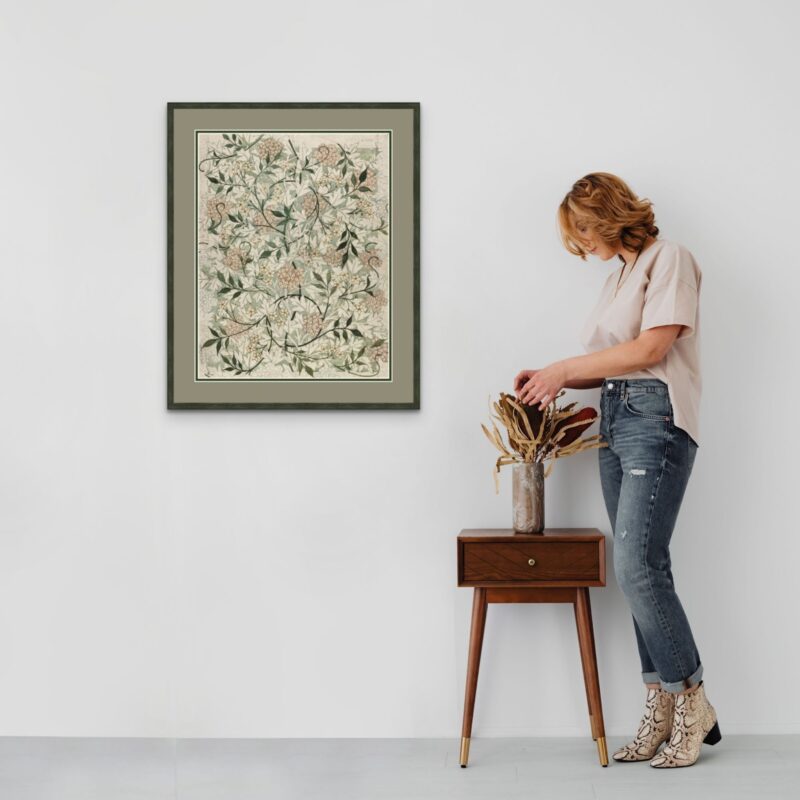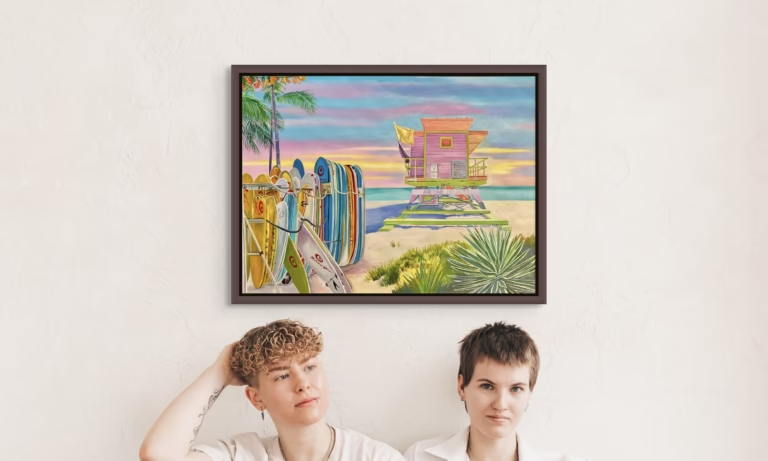Art has the power to transform spaces, evoke emotions, and add a very personal touch to the decor of a room. Selecting the right frame color is an important decision because the frame you choose can enhance or detract from the gravity of your art. In this guide, we’ll explore the world of frame colors.
The key thing to remember is that the frame’s job is to serve the artwork by accentuating it. The frame should not steal the viewer’s attention from the artwork.
Consider the Artwork Itself
The artwork’s styles and color schemes may benefit from specific frame colors. Here are some pointers to help you get started.
Neutral Elegance
If your artwork features vibrant colors or intricate details, a neutral frame color such as white, black, or shades of gray can provide an elegant and timeless touch. These colors allow the art to take center stage without distractions.
Matching the Dominant Hue
If your artwork has a dominant color, consider choosing a frame color that complements or matches that same hue. This creates a cohesive and harmonious look that draws attention to the art itself.
Contrasting for Drama
On the other hand, using a contrasting frame color can create a bold and dramatic effect. For example, if your artwork is predominantly cool-toned, a warm-colored frame like gold or red can make it pop.
Luxurious Metallics
Sleek metallic frames often work well with contemporary or modern art pieces. More ornate metallic frames can have an antique look and pair well with traditional and vintage-inspired artwork. They add a touch of luxury and sophistication to your display. Gold complements artworks created with a warm color palette, while silver works well with cooler palettes.
Wooden Frames for Warmth
Wooden frames in various shades can bring warmth and rustic charm to your art. Lighter wood frames work beautifully with pastels and watercolors, while darker woods can complement earthy tones and classical art.
Museum-Style Presentation
To achieve a museum-style look, consider opting for a classic black or white frame with a clean design. This approach can lend a timeless appeal to your art. A simple approach also lends itself to artworks that may change locations.
Consider the Surroundings
The context in which you plan to display your art also plays a vital role in frame color selection. Here are some factors to keep in mind.
Wall Color
Take a good look at the wall color where your art will hang. A frame color that contrasts with the wall can help the artwork stand out, while a matching frame can create a harmonious and integrated look. For example, a white frame with white matting on a white wall can create a pleasing layered effect.
Room Aesthetics
Consider the overall aesthetics of the room. Your frame color should complement the existing decor and furnishings. Harmonizing with existing design elements can create a cohesive atmosphere. For example, a room that’s quite rustic in design might work well with rustic wood frames.
Other frames
Look at the frames used in the room where you plan to hang your new piece. It’s always best if there is some level of continuity in style between the array of frames. They don’t all need to be the same color, but there should be some deliberate contrasting or complimenting cohesion within the pieces.
Lighting Conditions
The lighting in the room can affect how the frame color appears. In rooms with ample natural light, frame colors may appear different than in spaces with artificial lighting. Test different frames under the actual lighting conditions to ensure the desired appearance.
Frame mats
The color you use for your frame should also consider your mat color. (A mat is the border between the frame and the artwork.) Many people like neutral mats, but you can choose a colorful mat. If you decide to have a color mat, you need to think about how the mat color looks with the frame color and within the room context.
The Best Way to Choose Frame Color
There are a lot of variables to consider when choosing a frame color, which makes it challenging to get it right without seeing it in person. Thankfully, there’s a free solution that makes this possible. All FastFrame stores do free design consultations where we can explore the options with you, making it easy for you to see what your artwork will look like before you buy a frame. The design consultation is free, and there’s no obligation to purchase anything. Find your nearest FastFrame here.

